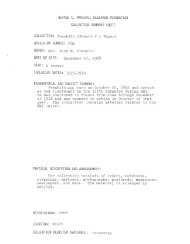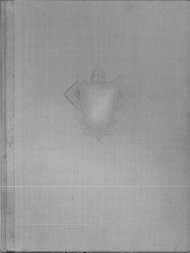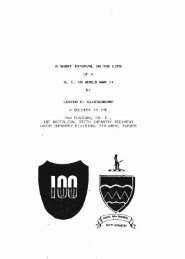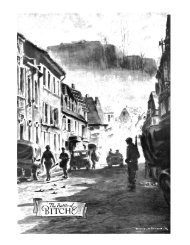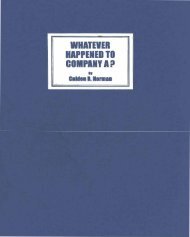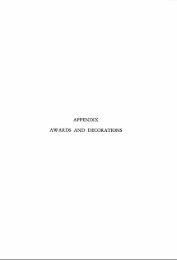Joint Operating Concept (JOC) - GlobalSecurity.org
Joint Operating Concept (JOC) - GlobalSecurity.org
Joint Operating Concept (JOC) - GlobalSecurity.org
Create successful ePaper yourself
Turn your PDF publications into a flip-book with our unique Google optimized e-Paper software.
two. When confronting non-state adversaries, the JFC may select a strategic<br />
concept that confronts them directly by using US forces to conduct COIN or CT,<br />
indirectly by using the security forces of state or non-state partners to conduct<br />
the operations instead of US forces, or some hybrid of the two. Using an indirect<br />
approach, the strategic concept may call for supporting the COIN and CT efforts<br />
of friendly states against local or regional insurgent or terrorist adversaries by<br />
providing intelligence, training, logistic, and combat advisory assistance and<br />
denying resources to the adversaries, such as finances, transnational movement,<br />
and access to communications. Further, an indirect approach would put a local<br />
or international face on the effort, reduce the US contribution, and maximize the<br />
strategic communications impact while denying the adversary the use of<br />
“imperialist US” themes.<br />
IW can occur within several strategic contexts, providing a broad range of<br />
strategic options for JFCs as they design future IW strategies and campaigns.<br />
• Option #1: <strong>Joint</strong> forces may conduct IW independently of conventional<br />
combat operations. This type of IW activity is advantageous when one of the<br />
end state objectives is to disguise or limit US involvement to preclude<br />
escalation into direct inter-state conflict. This approach is attractive if the<br />
adversary against whom the United States is engaged possesses significant<br />
strategic, geographic, political, or economic advantages.<br />
• Option #2: <strong>Joint</strong> forces may conduct IW in support of conventional<br />
combat operations during a direct inter-state conflict. This has been the<br />
most common form of IW in which the US military has engaged. The IW<br />
component of a broader conventional campaign supplements, expands, and<br />
deepens the scope and capabilities of the available lines of operation.<br />
• Option #3: <strong>Joint</strong> forces may conduct IW as the primary or supported effort<br />
of a military campaign, with conventional operations supporting IW<br />
activities. The strategic, operational, and tactical advantages for applying<br />
this context of warfighting include economy of force, deception, and<br />
increasing the legitimacy of the supported irregular force.<br />
4.d. Campaign Planning for IW<br />
“The first, the supreme, the most far-reaching act of judgment that the<br />
statesman and the commander have to make is to establish…the kind<br />
of war on which they are embarking; neither mistaking it for, nor trying<br />
to make it into something that is alien to its nature. This is the first of<br />
all strategic questions and the most comprehensive.”<br />
Carl von Clausewitz<br />
Campaign planning for IW is similar to campaign planning for MCO with one<br />
important distinction – for IW, the military instrument of national power is<br />
usually, if not always, a supporting effort to the other instruments of national<br />
power. As a result, one of the unique challenges of IW in developing a<br />
comprehensive campaign is recognizing that the military plan must integrate<br />
27




